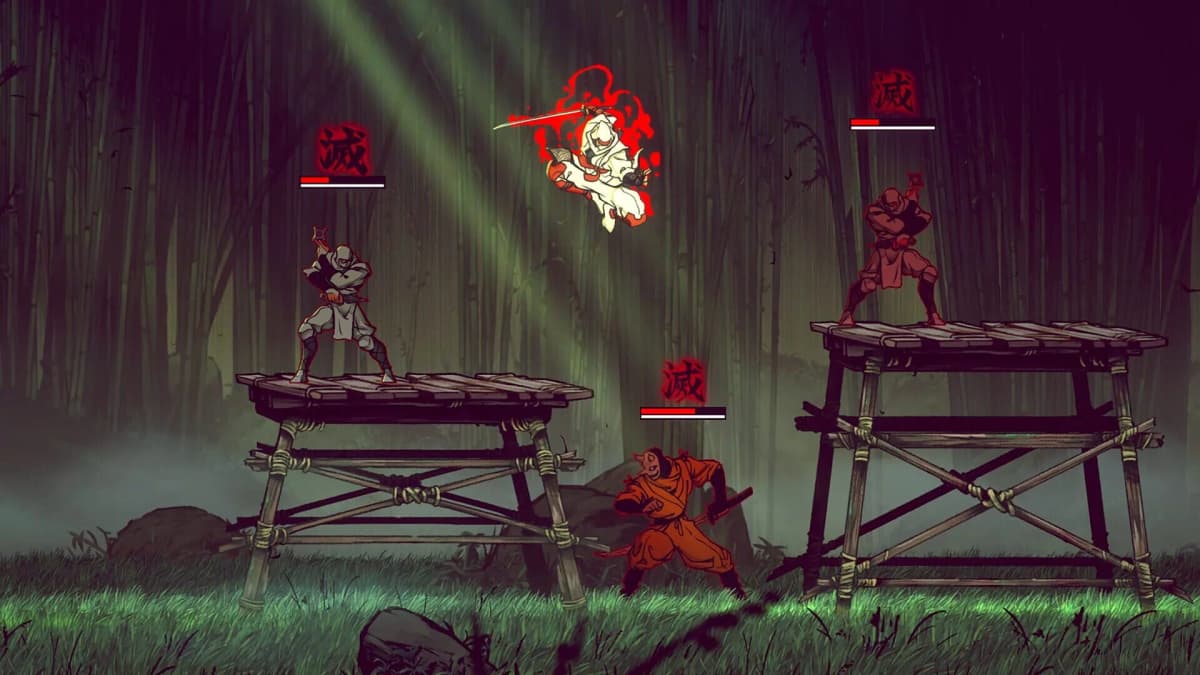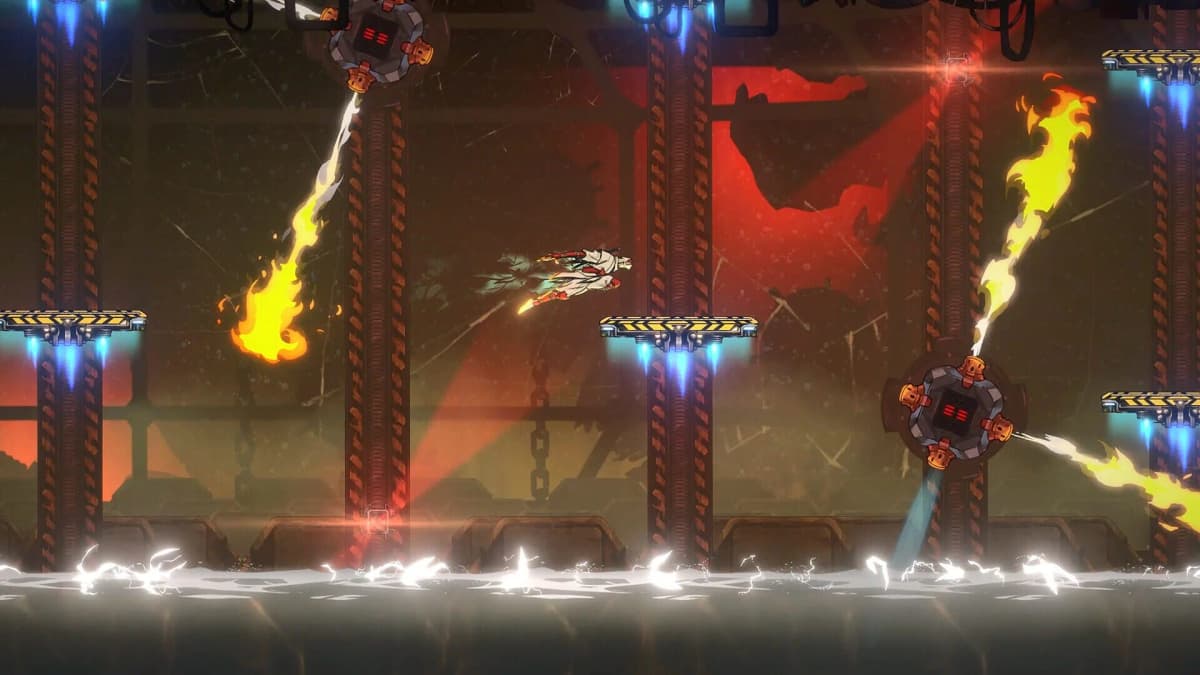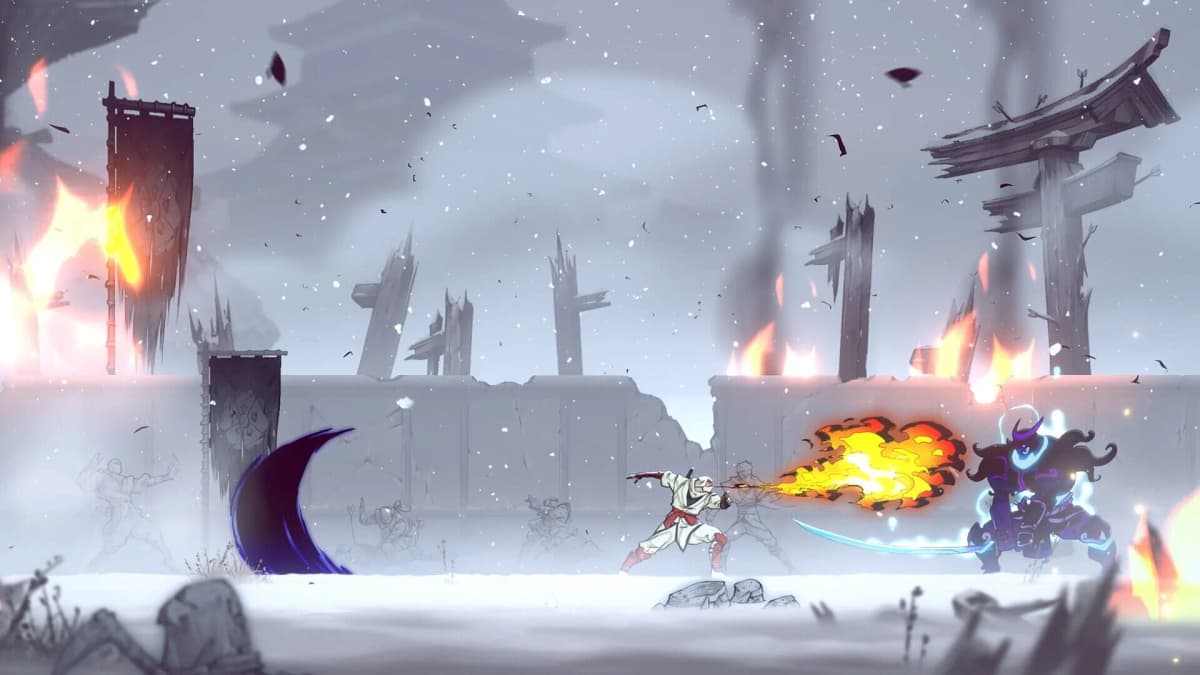
Game intel
SHINOBI: Art of Vengeance
Slay the enemies in the silence of the moment. Run through the world of Shinobi full of monsters and ninja actions. Grab Oborozuki, the legendary sword, and sl…
I grew up thinking Joe Musashi was the cool uncle of action games-the one who didn’t say much, moved like lightning, and quietly wrecked anyone in his way. So when Lizardcube and SEGA announced Shinobi: Art of Vengeance, I was equal parts hyped and nervous. Streets of Rage 4 proved Lizardcube could revive an icon, but Shinobi is a different beast. After 18 hours on PS5-credits rolled, 91% completion, a bunch of time lost to Boss Rush-I can say it: this is a confident revival that puts feel and flow over old-school cruelty. And yeah, I lost track of time more than once, in that “just one more statue, just one more run” kind of way.
My first session was a four-hour blur. The thing that stuck immediately wasn’t the story (classic vengeance groove, fully voiced, snappy static scenes) but the sensation of control: there’s a float to Joe’s jump, a soft snap to the dash-cancel, and a gratifying thwip to kunai that made me grin before I had even unlocked half the kit. It feels like someone took the spirit of the 16-bit games, a pinch of the PS2/3DS-era 3D Shinobi aggression, and poured it into a modern 2D combat framework. My brain labeled it “Shinobi May Cry” after the second mission and I never shook the nickname.
By the end of the first evening, it was clear this Shinobi isn’t obsessed with killing you. It wants you to feel like a master. That doesn’t mean it’s trivial (optional challenges and elite encounters will absolutely snap your focus), but the default difficulty meets you halfway. Checkpoints are generous, statues double as save points and fast returns, and the main path isn’t clogged with gotcha traps. The meanest platforming bits? They’re off to the side, tempting you with a chest or a talisman fragment, making the pain optional and the reward tangible. My inner completionist kept whispering, “You can land that triple air dash into wall-run into grapple,” and my outer self—several attempts later—admitted the whisper was right.
This softer stance could have killed the tension, but it didn’t, because the real high comes from flow. The combat has that deliciously limited-but-deep vibe, the DOOM school of design: a concise set of tools, tight enemy archetypes, and a demand that you actually learn patterns. Your kit is streamlined—blade, kunai, Ninpō—and the runway comes from how you stitch them together, how you read the arena, and how you exploit every cancel window and i-frame like you mean it. When it clicks, it’s pure dopamine. When it doesn’t, the restart is seconds away.
I’m a lab rat at heart: I’ll sit in a safe pocket of a room and test timings until the muscle memory feels inevitable. That paid off here. Joe’s blade strings are readable, cancels feel consistent, and the aerial drift lets you “surf” above danger just long enough to line up a dive. The kunai slot into that rhythm as connective tissue—keep a combo alive, tag a ranged annoyance, or pop a shield mid-string so you can slide back in. And the Ninpō? Strong. Borderline too strong. I started rationing it for bosses and elite mixes, but when I unleashed it in a regular room the screen practically apologized to the enemies for what was about to happen.
The talisman system became my obsession. Some trigger after you hit certain combo thresholds, others tweak your survivability or add weird little edges to your kit. A personal favorite perk encouraged me to stay aggressive by lighting up only after I hit a specific hit-count, and the game makes sure you notice when you’ve “earned” a talisman’s payoff with clear visual and audio cues. It’s that feedback loop—sight, sound, impact—that kept me pushing for cleaner, longer strings instead of panic-spamming tools on cooldown.
Enemy variety sits in that “enough but not bloated” zone. There aren’t fifty archetypes and there don’t need to be; the spice comes from how they’re mixed. The first time a fast melee bruiser flanked me while a sniper pinned the center lane and a caster layered an AoE on the floor, I had to reset my approach—bait the sniper, bait the swing, dash-cancel through, tag the caster mid-chant, then dump Ninpō on the mop-up. It’s not as punishing as Ninja Gaiden at its meanest, but the reads matter, and playing sloppily feels bad in your hands, not just on the death screen.

Shinobi has never been a Metroidvania, and this one isn’t either, but the edges are fuzzier in a good way. Every level hides little side paths that spiral into reward rooms, challenge chambers, or clever traversal micro-puzzles. There’s a merchant waiting to convert your spoils into new techniques, and more than once I backtracked to an earlier stage to poke at a suspicious nook with a freshly unlocked trick. The game lets you warp in at any statue you’ve touched, which is a small kindness that pays off big if you’re going for those 100% sweeps or revisiting for better ranks.
Here’s the rub: the level design is effective but starts repeating ideas. By hour ten I was having déjà vu—rooms built from familiar blocks, recurring setups where the “answer” felt the same as it did two missions ago. It’s not that the team ran out of imagination; it’s more like they found a set of reliable toys and kept reaching for them. The artistry keeps it from feeling stale, and the late-game shakes the snow globe with a few clever remixes, but I did wish for one or two big swing levels that threw the playbook out entirely.
Every now and then, the camera and pace switch up for run’n’gun interludes. These are affectionate throwbacks, and they look gorgeous, but they linger a hair too long for what they offer. The good news: failure never nukes your progress, and their role in the rhythm of the campaign works—palate cleansers that nod to the franchise’s history. I wouldn’t cut them, but I did sometimes think, “Okay, I get it,” a minute before the section wrapped.
Content-wise, this is the most generous Shinobi I’ve played. The Adventure mode is the backbone: story missions, exploration, light backtracking, collectibles, and upgrade economy. Switch to Arcade and the scoring itch gets scratched—same tight encounters, different mental framing. It’s the “clean play” mode where I suddenly care about not getting hit, about keeping that combo alive past where my brain thought it was possible. Then there’s Boss Rush, which became my 2 a.m. nemesis. The patterns are fair, even readable, but stringing them back-to-back exposes the gaps in your fundamentals. My first full clear took way too many attempts and felt weirdly like a graduation ceremony—here’s your minor in Shinobi.

On the horizon, SEGA’s planning a DLC that lets Musashi face bosses from other SEGA series—the first tease being the good doctor himself, Dr. Eggman. That’s the exact kind of playful flex this revival earns. The old Shinobi games in Japan weren’t shy about riffing on pop culture; this feels like a modern, sanctioned wink. I’m in.
I knew I’d like the art; I didn’t expect to feel spoiled by it. Lizardcube’s hand-painted vibe isn’t just pretty, it’s purposeful. The clean silhouettes and color contrasts help you parse chaos at a glance. Backgrounds aren’t static postcards—they hum with life, tiny details, and an anime-tinged futurism that channels Otomo’s meticulous sensibility without drowning the frame. Every slash lands with punchy VFX, every parry pings just so, and the camera nudges at the right moments to sell impact without stealing control. It’s the kind of direction that makes your hands feel smarter.
The soundtrack is a tag-team dream: Tee Lopes bringing the springy, melodic momentum he’s become known for on SEGA-adjacent projects, with Yuzo Koshiro’s DNA threaded through the palette. It pulls you forward. More than once I caught myself staying in a room to juggle the last enemy a bit longer purely because the track had me in that groove. Outside the game, there’s even a promotional track by Young Dirty Bastard—a very SEGA move that fits the series’ long, weird history with pop culture nods. In-game, the sound design is what seals the loop: clean hit-stop, crunchy blade feedback, and distinct tells for enemy patterns that your ears learn before your eyes do.
Let’s be real: the original Shinobi games could be unforgiving. Art of Vengeance chooses a friendlier path, and I think it’s the right call for 2025. If you want friction, it’s here—in challenge rooms, elite encounters, higher Arcade ranks, and Boss Rush. If you want a slick action tour with room to feel powerful, the mainline Adventure is happy to accommodate. I’m usually the guy yelling, “Make it harder,” and even I appreciated that my skill expression came from mastery, not attrition. When I took a break after ten hours and came back, my hands were instantly back in the pocket; the design has that learnable rhythm that sticks.
I played on PS5 with the default settings and never had to think about performance—which is exactly how I like it in an action game. Inputs felt immediate, animations snapped without tearing, and load times were short enough that retries never broke the mood. The hitboxes read fair, which is the unsexy compliment every action game wants but few earn. If there were framerate dips, they were invisible to my hands; the only stumbles I noticed were a couple of micro-hitches upon checkpoint triggers, the sort of thing you forget five seconds later because you’re busy trying not to get sliced.

If you bounced off the old Shinobi games for being mean, this is your chance to finally “get” the appeal without the sandpaper. If you love DMC-style flow and Platinum’s clarity of intent but want something that respects your time and doesn’t drown you in command lists, welcome home. If you’re a score chaser, the Arcade mode gives you a sturdy canvas. And if you’re a stubborn completionist who enjoys optional gauntlets and shaving seconds off routes, the exploration hooks will keep you replaying. Ultra-purists who want a brick wall from minute one might find the baseline gentler than they’d like, but the higher-end challenges and Boss Rush do bite back.
About halfway through, there was a moment—standing at a teleport statue, deciding whether to dive into an optional platforming chamber or push the story—where I realized I had stopped comparing Art of Vengeance to “what Shinobi used to be.” It had earned its place in my head on its own terms. The flow is the star. The power fantasy is calibrated. The generosity (in checkpoints, in comeback windows, in modes) isn’t there to flatten the game, it’s there to invite you to actually engage with all of it without fearing punishment for experimenting. That’s a modern Shinobi I want to play.
I do wish the level design took bigger swings in the back half and that Ninpō’s tuning didn’t let me bulldoze a few fights on autopilot. But those are the nitpicks that float to the top when the fundamentals are rock solid. Layer on a gorgeous presentation, a soundtrack that slaps, and a roadmap that teases boss cameos from across SEGA’s universe, and you’ve got a comeback that respects the past while making a case for Shinobi in 2025 and beyond.
Score: 8.5/10
Shinobi: Art of Vengeance is the first Shinobi in decades that I want to evangelize. It’s an action game built for feel—clean inputs, readable rooms, satisfying mastery—and padded with smart modes that keep you coming back. It stumbles with some recycled level ideas and a few overtuned tools, but when you’re mid-combo with the music kicking and the talisman glow begging you to go one hit further, none of that matters. This is a win for SEGA, for Lizardcube, and for anyone who ever wanted to be the white lightning of Oboro without breaking a controller.
Get access to exclusive strategies, hidden tips, and pro-level insights that we don't share publicly.
Ultimate Reviews Strategy Guide + Weekly Pro Tips